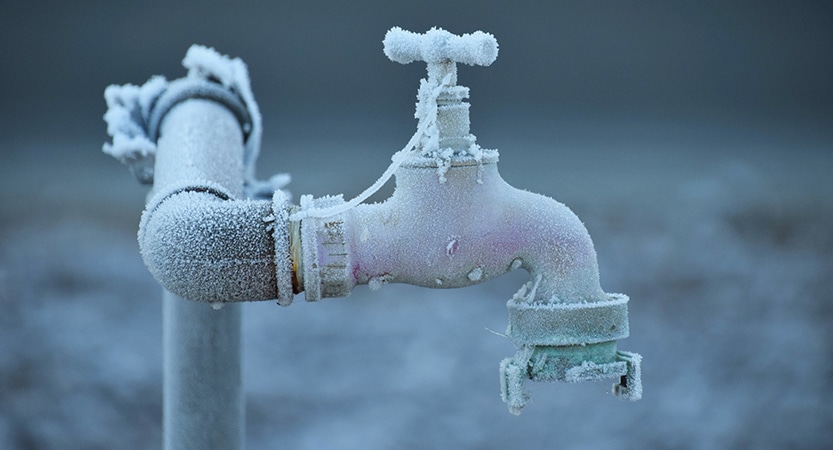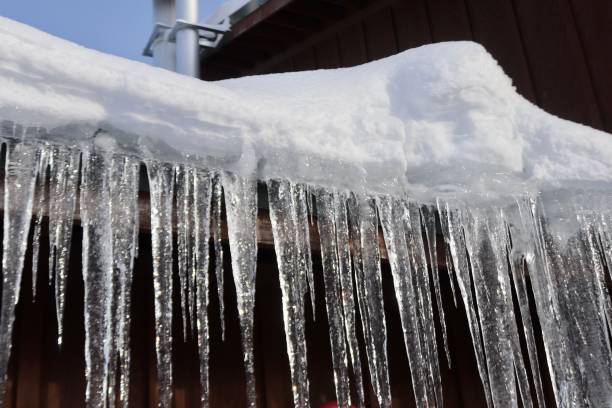We have stumbled on this post on How to Prevent Your Pipes From Freezing down the page on the web and felt it made perfect sense to quickly share it with you here.

Cold weather can wreak havoc on your plumbing, especially by freezing pipelines. Here's exactly how to avoid it from happening and what to do if it does.
Intro
As temperatures drop, the danger of icy pipes increases, potentially causing pricey repairs and water damages. Understanding just how to avoid icy pipes is critical for homeowners in cool climates.
Avoidance Tips
Protecting prone pipes
Cover pipes in insulation sleeves or make use of warm tape to secure them from freezing temperature levels. Concentrate on pipelines in unheated or exterior areas of the home.
Heating techniques
Maintain interior spaces adequately warmed, specifically locations with pipes. Open cabinet doors to permit cozy air to distribute around pipelines under sinks.
Exactly how to identify icy pipelines
Search for lowered water flow from taps, unusual smells or noises from pipelines, and visible frost on subjected pipelines.
Long-Term Solutions
Architectural modifications
Consider rerouting pipelines far from exterior wall surfaces or unheated areas. Add extra insulation to attic rooms, cellars, and crawl spaces.
Updating insulation
Invest in top notch insulation for pipes, attic rooms, and wall surfaces. Correct insulation assists keep constant temperature levels and minimizes the danger of icy pipelines.
Securing Exterior Plumbing
Yard tubes and outdoor faucets
Disconnect and drain pipes yard tubes prior to winter. Set up frost-proof spigots or cover outdoor faucets with insulated caps.
Comprehending Frozen Pipelines
What causes pipelines to freeze?
Pipelines ice up when revealed to temperature levels listed below 32 ° F (0 ° C) for expanded periods. As water inside the pipelines ices up, it increases, putting pressure on the pipe walls and possibly creating them to burst.
Dangers and damages
Frozen pipes can bring about water interruptions, property damage, and pricey repair services. Burst pipelines can flood homes and trigger comprehensive architectural damage.
Indications of Frozen Water Lines
Recognizing icy pipes early can avoid them from bursting.
What to Do If Your Pipelines Freeze
Immediate actions to take
If you suspect frozen pipes, keep taps open to soothe stress as the ice thaws. Utilize a hairdryer or towels taken in warm water to thaw pipes slowly.
Conclusion
Stopping frozen pipes needs aggressive measures and quick responses. By recognizing the causes, indications, and safety nets, property owners can secure their plumbing during cold weather.
5 Ways to Prevent Frozen Pipes
Drain Outdoor Faucets and Disconnect Hoses
First, close the shut-off valve that controls the flow of water in the pipe to your outdoor faucet. Then, head outside to disconnect and drain your hose and open the outdoor faucet to allow the water to completely drain out of the line. Turn off the faucet when done. Finally, head back to the shut-off valve and drain the remaining water inside the pipe into a bucket or container. Additionally, if you have a home irrigation system, you should consider hiring an expert to clear the system of water each year.
Insulate Pipes
One of the best and most cost-effective methods for preventing frozen water pipes is to wrap your pipes with insulation. This is especially important for areas in your home that aren’t exposed to heat, such as an attic. We suggest using foam sleeves, which can typically be found at your local hardware store.
Keep Heat Running at 65
Your pipes are located inside your walls, and the temperature there is much colder than the rest of the house. To prevent your pipes from freezing, The Insurance Information Institute suggests that you keep your home heated to at least 65 degrees, even when traveling. You may want to invest in smart devices that can keep an eye on the temperature in your home while you’re away.
Leave Water Dripping
Moving water — even a small trickle — can prevent ice from forming inside your pipes. When freezing temps are imminent, start a drip of water from all faucets that serve exposed pipes. Leaving a few faucets running will also help relieve pressure inside the pipes and help prevent a rupture if the water inside freezes.
Open Cupboard Doors
Warm your kitchen and bathroom pipes by opening cupboards and vanities. You should also leave your interior doors ajar to help warm air circulate evenly throughout your home.

I came across that entry on 6 Ways to Prevent Frozen Pipes while surfing around the internet. You should take the opportunity to share this blog posting if you liked it. Many thanks for being here. Don't hesitate to check our site back soon.
Schedule Appointment Now